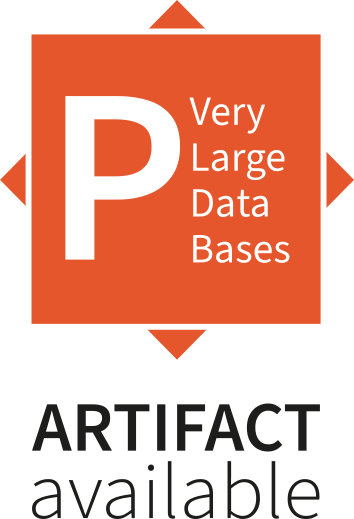go back
go back
Volume 17, No. 9
Optimal Matrix Sketching over Sliding Windows
Abstract
Matrix sketching, aimed at approximating a matrix 𝑨 ∈ R^(𝑁×𝑑) consisting of vector streams of length 𝑁 with a smaller sketching matrix 𝑩 ∈ R^(l×𝑑), l ≪ 𝑁 , has garnered increasing attention in fields such as large-scale data analytics and machine learning. A well-known deterministic matrix sketching method is the FreqentDirections algorithm, which achieves the optimal 𝑂(𝑑/𝜀) space bound and provides a covariance error guarantee of 𝜀 = ∥ 𝑨^⊤𝑨 − 𝑩^⊤𝑩 ∥_2 / ∥𝑨∥^2_𝐹 . The matrix sketching problem becomes particularly interesting in the context of sliding windows, where the goal is to approximate the matrix 𝑨_𝑊 , formed by input vectors over the most recent 𝑁 time units. However, despite recent efforts, whether achieving the optimal 𝑂(𝑑/𝜀) space bound on sliding windows is possible has remained an open question. In this paper, we introduce the DS-FD algorithm, which achieves the optimal 𝑂(𝑑/𝜀) space bound for matrix sketching over row-normalized, sequence-based sliding windows. We also present matching upper and lower space bounds for time-based and unnormalized sliding windows, demonstrating the generality and optimality of DS-FD across various sliding window models. This conclusively answers the open question regarding the optimal space bound for matrix sketching over sliding windows. We conduct extensive experiments with both synthetic and real-world datasets, validating our theoretical claims and thus confirming the correctness and effectiveness of our algorithm, both theoretically and empirically.
PVLDB is part of the VLDB Endowment Inc.
Privacy Policy